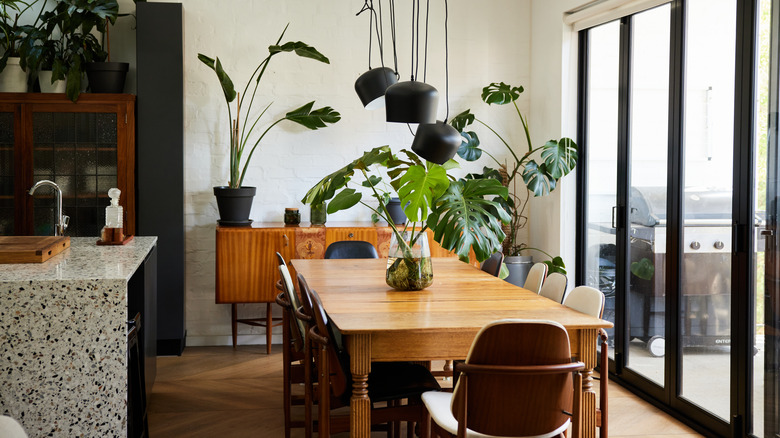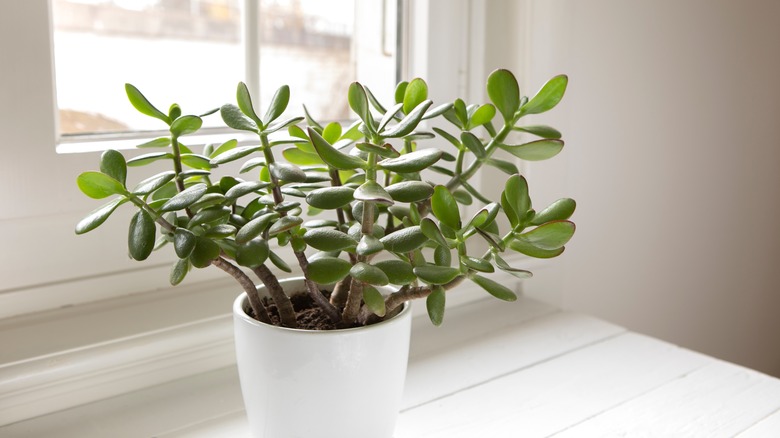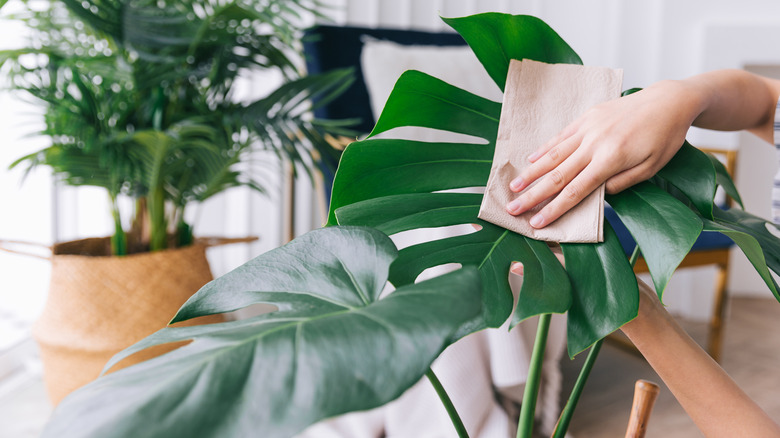Is It True That Plants Can Die Of Old Age?
Whether you're talking about an ancient redwood tree or a new succulent you just got for your window box, all plants have a life span. Some plants only live a season (like most annual flowers), while some trees can live thousands of years. Despite their name, some perennials have a short life span — delphiniums usually live two to three years at most but may reseed — while some, like peonies, can happily live to be 100! There are bonsai trees that have been carefully tended and kept alive for close to 1,000 years. But for the most part, plants don't die because they're old: they die from pests, diseases, injury, or neglect.
That said, you may find that some of your houseplants or perennials are less vigorous than they once were. Maybe they have fewer blooms, the branches are leggy, or their once-shiny leaves have lost their luster. Depending on the plant type, there are ways to keep it healthy, thriving, and looking good, even if it's getting on in years.
Whether your droopy plant or sad-looking tree needs pruning, fertilizer, a new pot, or a fresh helping of soil, you can prolong its life. But in some cases, it may be impossible to bring it back to its former vibrancy, and sometimes, the best course may be to say goodbye. Outdoor plants and houseplants have different sets of needs as they get more mature.
How long do houseplants live?
Some houseplants can be surprisingly long-lived. Many of us know of a relative whose Christmas cactus has bloomed the same time every year for decades or the spider plant that has spawned hundreds of "babies" to be shared with friends. Other long-lived houseplants include dieffenbachia, snake plants, philodendrons, and fig trees.
Few houseplants grow very large over time (like a monster-sized monstera), and others seem to stay the same size (like orchids). Some houseplants may grow very long vines or tendrils, while others increase in height as the years go by. Knowing what to expect from your plant as it ages will help you determine where to put it in case it needs more space or sunlight. If your houseplant is thriving, it generally means it's in a good location and well cared for.
But as many houseplant enthusiasts know, some are very fussy and need special attention paid to their growing conditions, while others are relatively carefree. Jade plants, for example, are easy to take care of, requiring only occasional watering, a reasonably sunny spot, and some dusting of leaves when needed. But they are also very long-lived (50 years or even up to 100!), and once they reach a specific size, there is some possibility of stems or branches breaking under the weight of new leaves, so moving them or repotting them requires more care than it does for younger specimens.
How to keep plants alive
Knowing how long plants can expect to live can help you determine the best ways to care for them. For tropical houseplants, there may be particular needs such as a constant temperature, making sure roots have plenty of space with regular repotting, and careful monitoring for pests and diseases. Addressing these issues may be part of that plant's basic maintenance and should become part of your routine, just like watering or deadheading.
Some caretaking tasks might seem odd. For example, large houseplants with glossy foliage benefit from occasionally cleaning and polishing the leaves. Any plant that produces flowers should be deadheaded regularly to keep it clean and help prevent diseases. Repotting and adding new soil should be done for all houseplants regularly — though some plants need this far less often than others.
It can be helpful to consult plant care guides in books or online to ensure you're familiar with the tips recommended for your plants. Be prepared for the changes and needs that may occur in your house plant's life, and you may even be able to grow old together.


